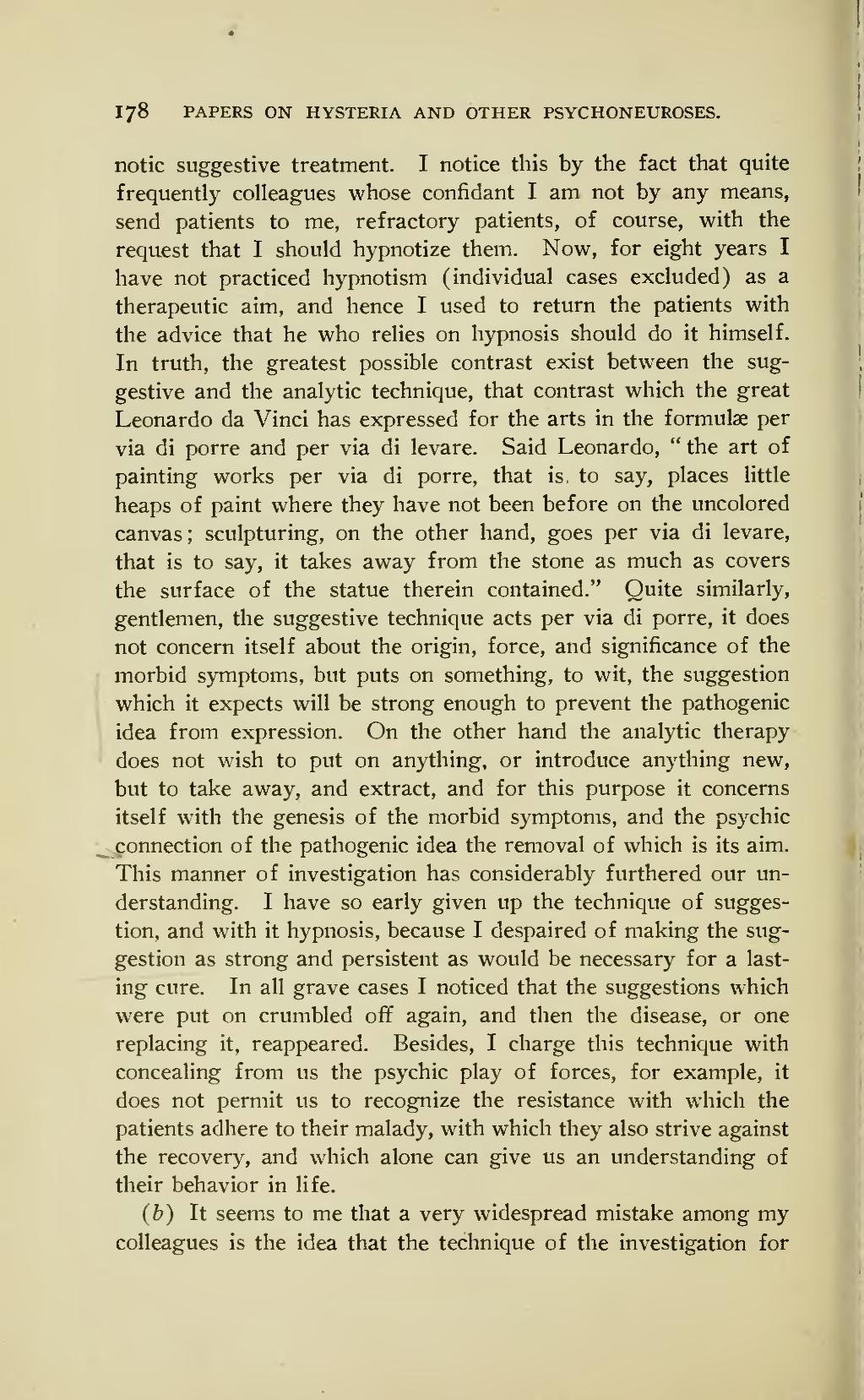notic suggestive treatment. I notice this by the fact that quite frequently colleagues whose confidant I am not by any means, send patients to me, refractory patients, of course, with the request that I should hypnotize them. Now, for eight years I have not practiced hypnotism (individual cases excluded) as a therapeutic aim, and hence I used to return the patients with the advice that he who relies on hypnosis should do it himself. In truth, the greatest possible contrast exist between the suggestive and the analytic technique, that contrast which the great Leonardo da Vinci has expressed for the arts in the formulae per via di porre and per via di levare. Said Leonardo, "the art of painting works per via di porre, that is, to say, places little heaps of paint where they have not been before on the uncolored canvas; sculpturing, on the other hand, goes per via di levare, that is to say, it takes away from the stone as much as covers the surface of the statue therein contained." Quite similarly, gentlemen, the suggestive technique acts per via di porre, it does not concern itself about the origin, force, and significance of the morbid symptoms, but puts on something, to wit, the suggestion which it expects will be strong enough to prevent the pathogenic idea from expression. On the other hand the analytic therapy does not wish to put on anything, or introduce anything new, but to take away, and extract, and for this purpose it concerns itself with the genesis of the morbid symptoms, and the psychic connection of the pathogenic idea the removal of which is its aim.
This manner of investigation has considerably furthered our understanding. I have so early given up the technique of suggestion, and with it hypnosis, because I despaired of making the suggestion as strong and persistent as would be necessary for a lasting cure. In all grave cases I noticed that the suggestions which were put on crumbled ofif again, and then the disease, or one replacing it, reappeared. Besides, I charge this technique with concealing from us the psychic play of forces, for example, it does not permit us to recognize the resistance with which the patients adhere to their malady, with which they also strive against the recovery, and which alone can give us an understanding of their behavior in life.
(b) It seems to me that a very widespread mistake among my colleagues is the idea that the technique of the investigation for
